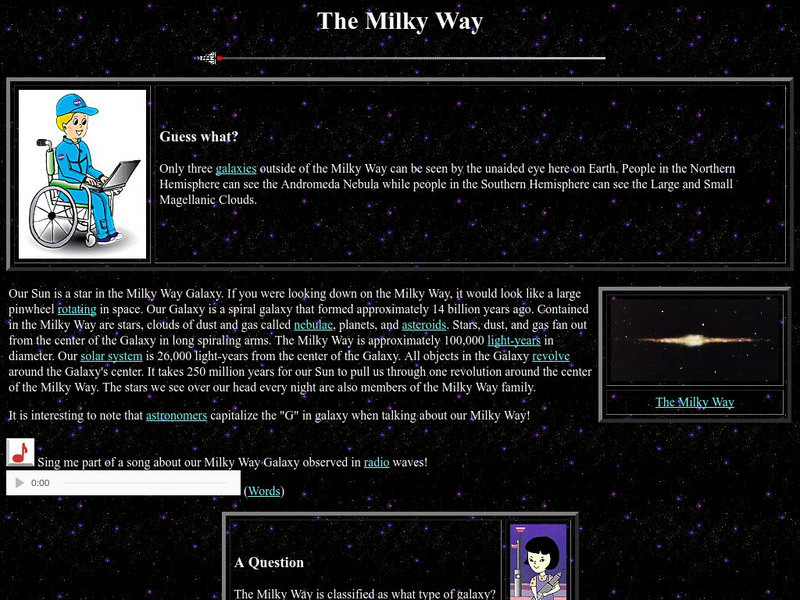NASA
Nasa: History of Venus Transit
NASA site recounts the history of the Venus Transits that have occurred over the past centuries and the various descriptions astronomers have written about them.
PBS
Pbs: Discovery of Quasars 1960
PBS offers a brief history of the discovery of quasars and the people involved.
Space Telescope Science Institute
The Hubble Heritage Project: Crab Nebula
A picture of the Crab Nebula and accompanying text.
Space Telescope Science Institute
Hubble Site: The "Rotten Egg" Nebula
This NASA Hubblesite page provides basic information about and photographs of the "Rotten Egg" nebula.
University of Cambridge
University of Cambridge: Cosmology: Galaxies
This site from the Cambridge Relativity provides a brief description of the structure of the Milky Way galaxy. The parts described are the disc, bulge, and halo.
NASA
Nasa Star Child: The Milky Way
The information, geared mainly for younger viewers, provides simple and basic information about the Milky Way, and includes several embedded links to related information.
NASA
Nasa Star Child: Stars (Level 2)
This NASA site that explains the notable features of stars and constellations, including medium and massive stars. Many terms are clickable links to definitions. There is also a link to the Level 1 version of this site, which is written...
NASA
Nasa: Wilkinson Microwave Anisotropy Probe (Wmap): The Milky Way
Description of the three major components of the Milky Way galaxy as well as images and resources for further reading.
Curated OER
Sequence of Events in a Supernova Explosion
The complex sequence of events in a supernova explosion are explained and illustrated.
PBS
Pbs Teachers: Scientific American: Science in Paradise: Big Dish
Investigate the science of radio astronomy, and create a model of a curved reflecting dish that will work like the Arecibo detector to detect electromagnetic waves. Explore risk using a risk space grid.
Curated OER
Smithsonian Institution Archives: Jacqueline L. Schroedter
Jacqueline L. Schroedter, a scientist at Lockheed Missiles and Space Company when this photograph was taken, had earned a B.S. in astronomy from University of Arizona. The company-supplied caption said: "She is active in the...
Other popular searches
- Astronomy and Space Science
- Astronomy and Space
- "Astronomy and Space Science
- Astronomy and Space Lesson








